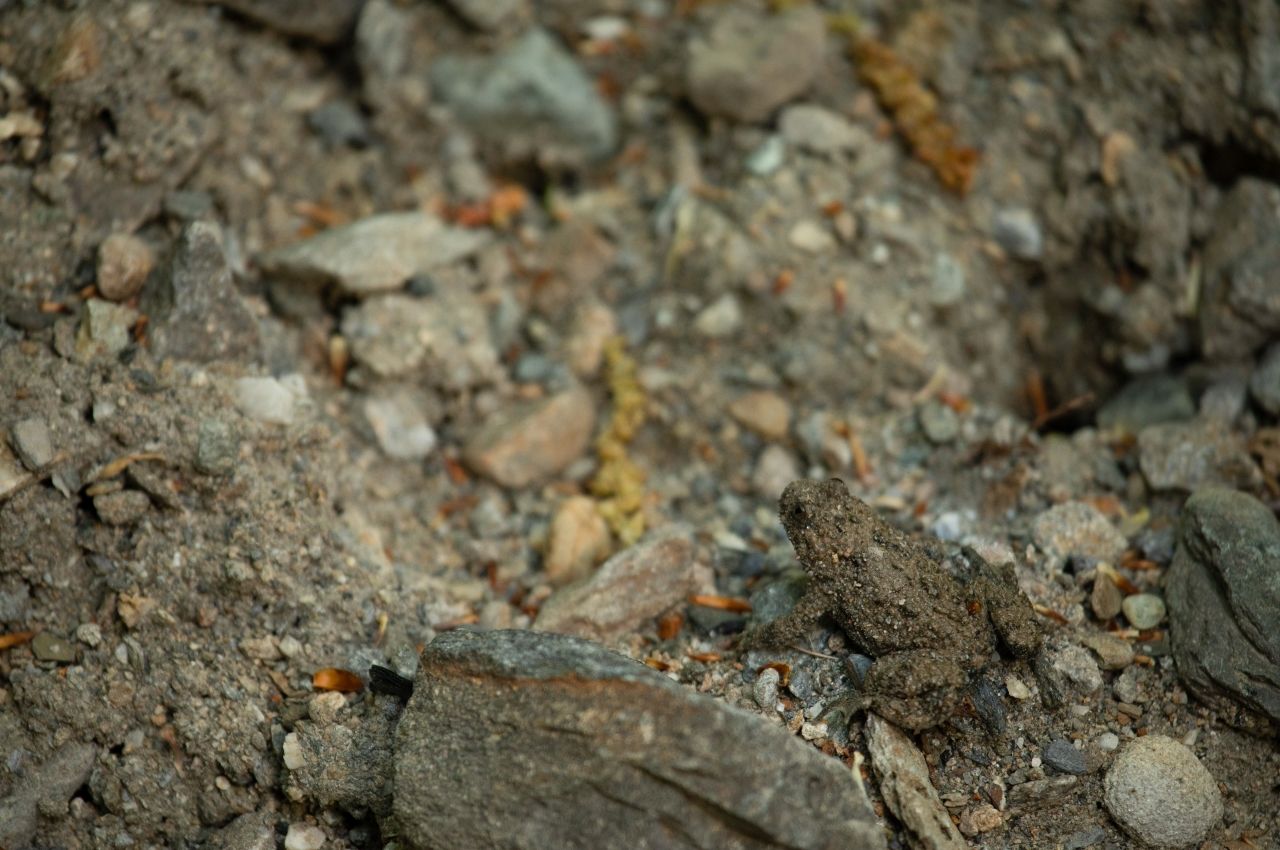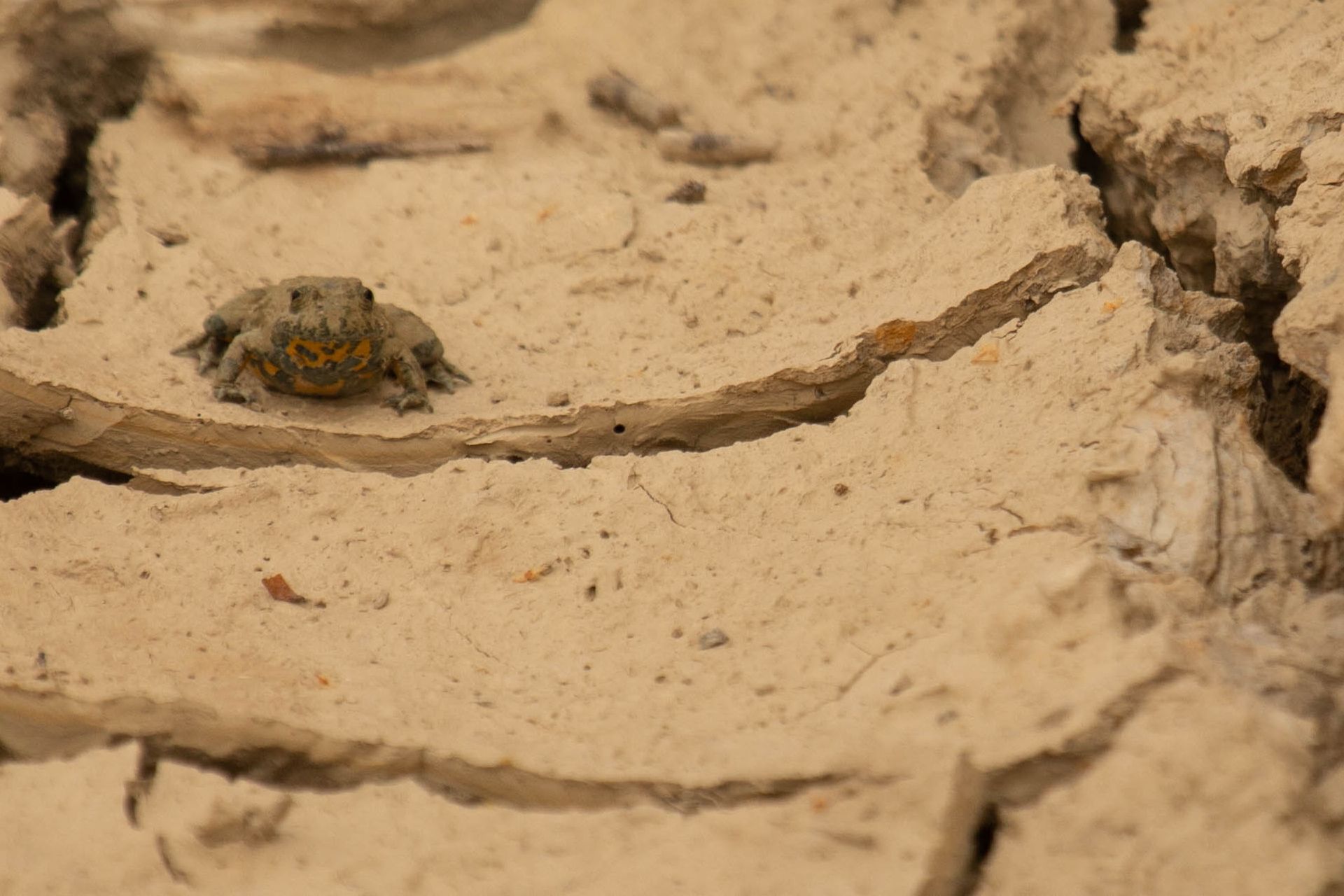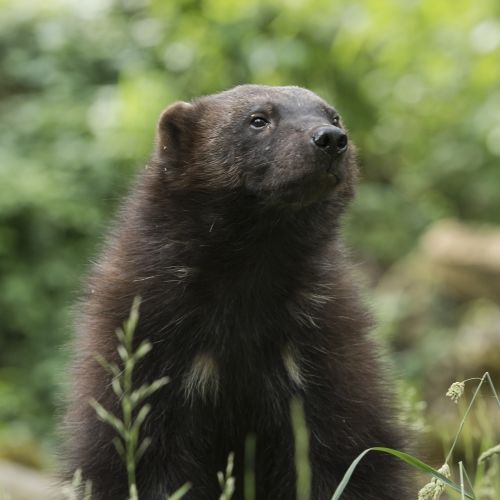The yellow-bellied toad
The wind has died down. Everything is motionless. The reeds, elegant guardians of the pond seem frozen in time. Suddenly, the tranquil water surface ripples. A yellow-bellied toad has just dived into the pond. He swims vigorously to reach the obscure depths of the pond and disappears into the darkness. On the edges of the pond, an impromptu concert begins. The sound of tiny bells fills the air as his sidekicks raise their voice and break the silence of this charming spot.

The toad that tolls the bells
The yellow-bellied toad is a rare and protected tiny toad. It can be found in Belgium. It is fond of shallow and stagnant water and is prone to settle down in temporary small bodies of water such as puddles, ruts, drinking troughs... The species is threatened partially because its habitat is disappearing as a result of water pollution. It owes its name to the bright yellow colour of its underbelly. In French it is also known as the 'bell-ringer' because of the sound it makes during the mating season, reminiscent of a softly chiming bell. As the species does not have a vocal bladder, the call is quite gentle.
It is very discreet and extremely hard to spot. Its brown greyish back serves as camouflage. When the toad feels threatened, it turns on its back to expose its brightly coloured belly which acts as a warning signal. It can also excrete a nauseating liquid that will sting any potential predators' eyes.
The yellow-bellied toad hibernates from October to April, it winters in a winter burrow or other hole in the ground.

Reproduction
The toads mate as soon as the hibernation ends, from May to July. The male toad will sing day and night to attract females. The female usually lay their eggs in small bodies of water, about three times per year. Each clutch contains between 50 and 100 eggs. The small clumps are secured to various water plants. After about 10 days, the eggs hatch and the tadpoles start their metamorphosis.
Did you know that?
The yellow-bellied toad has heart-shaped pupils.
The toad has a defence mechanism when it feels threatened: it turns on its back to expose its brightly coloured belly (this is known as the Unken reflex). This position acts as a warning signal; alerting potential predators that it is capable of excreting a toxic liquid, a technique that will infallibly scare off any and all potential attackers.
The Domain of the Caves of Han takes an active part in the preservation of this threatened species in order to reintroduce it into its natural habitat.

Discover the European Big 5
The bison, the wolverine, the wolf, the lynx and the brown bear




